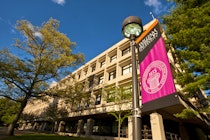Add a college to compare up to four schools
Frequently compared to these colleges. Click a college to add to the comparison.
Montclair State University Kean Penn State FDU Rutgers University-Newark Rowan University New Jersey City University Ramapo College of New Jersey UHart CCSU Monmouth University Felician College| University of Saint Joseph | William Paterson University of New Jersey | College 3 | College 4 | |
|---|---|---|---|---|
 |
 |
|||
| Remove | Remove | +Add | +Add | |
Overview |
USJ | William Paterson University of New Jersey | ||
| Location | West Hartford, CT | Wayne, NJ | ||
| Setting | Small City | Large Suburban | ||
| Enrollment | 1,992 | 9,070 | ||
| Type | Private 4 Year | Public 4 Year | ||
| National Ranking | #290 | #557 | ||
| Religious Affiliation | Roman Catholic | - | - | - |
| Status | Non-profit | Non-profit | ||
| Website | usj.edu | wpunj.edu | ||
| Team Colors |
Costs |
USJ | William Paterson University of New Jersey | ||
| Tuition (In State) | $42,050 | $14,192 | ||
|---|---|---|---|---|
| Tuition (Out of State) | $42,050 | $23,192 | ||
| Room & Board | $13,240 | $13,160 | ||
| Avg Net Price | $25,860 | $12,967 | ||
| Avg Grant Aid | $28,311 | $10,919 | ||
| % Receiving Grant Aid | 100% | 95% |
Admission |
USJ | William Paterson University of New Jersey | ||
|---|---|---|---|---|
| Admission Chances | Calculate | Calculate | ||
| Applied | 1,654 | 7,062 | ||
| Admitted | 1,238 | 6,464 | ||
| Acceptance Rate | 74.8% | 91.5% | ||
| Enrolled % | 15.3% | 12.5% | ||
| Avg High School GPA | 3.46 | 2.97 | ||
| Typical High School Grades | B+ | B- | ||
| Admissions Standards | Challenging | Difficult | ||
| Applicant Competition | ||||
| ACT Range | ||||
| SAT Range | 1070/1275 | 990/1345 | ||
| Submit Test Scores | Not required for admission, but considered if submitted (Test Optional) | Not required for admission, but considered if submitted (Test Optional) | ||
| Application Deadline | Jun 1, 2025 |
Academics |
USJ | William Paterson University of New Jersey | ||
|---|---|---|---|---|
| Student to Faculty Ratio | 8:1 | 15:1 | ||
| Popular Majors |
|
|
||
Outcomes |
USJ | William Paterson University of New Jersey | ||
| Graduation Rate | 56% | 46% | ||
| Median Earnings (After 10 years) | $51,200 | $46,500 | ||
| Making Student Loan Payments | 60% | 59% | ||
| Median Student Loan Debt | $27,000 | $24,500 | ||
| Median Loan Payment | $279 | $253 |
Diversity |
USJ | William Paterson University of New Jersey | ||
|---|---|---|---|---|
| % Men | 23% | 35% | ||
| % Women | 77% | 65% | ||
| Racial Diversity | High | Very High | ||
| HBCU | No | No | ||
| % White | 54% | 43% | ||
| % Black | 16% | 16% | ||
| % Hispanic | 17% | 27% | ||
| % Native American | 0% | 0% | ||
| % Pacific Islander | 0% | 0% | ||
| % Two or More Races | 2% | 3% | ||
| % International | 0% | 0% | ||
| % Unknown Race | 6% | 3% |
Students |
USJ | William Paterson University of New Jersey | ||
|---|---|---|---|---|
| % In-State | 83% | 92% | ||
| % Out-of-State | 16% | 6% | ||
Campus |
USJ | William Paterson University of New Jersey | ||
| Campus Housing | Yes | Yes | ||
| Freshman Dorm Required | No | No | ||
| Meal Plan | Yes | Yes | ||
| Weekend/Evening Classes | Yes | No | ||
| Daycare Facility | No | Yes | ||
| Learn More | Details | Details |
Comparable Facts
- William Paterson University of New Jersey is larger than than USJ based on total student enrollment (9,070 students vs. 1,992 students)
USJ vs. William Paterson University of New Jersey Cost Comparison
Which college is more expensive, USJ or William Paterson University of New Jersey?
- University of Saint Joseph is 196.3% more expensive to attend than William Paterson University of New Jersey for in-state tuition ($42,050.00 vs. $14,192.00)
- Out of state tuition is 81.3% higher at USJ than William Paterson University of New Jersey ($42,050.00 vs. $23,192.00)
- The typical actual cost that students pay to attend (average net price) is less at William Paterson University of New Jersey than USJ ($12,967 vs. $25,860)
- Living costs (room and board or off-campus housing budget) at William Paterson University of New Jersey are 0.6% lower than costs at University of Saint Joseph ($13,160 vs. $13,240)
- More students receive financial grant aid at University of Saint Joseph than William Paterson University of New Jersey (100% vs. 95%)
- The average total grant financial aid received by University of Saint Joseph students is 159.3% larger than aid received William Paterson University of New Jersey ($28,311 vs. $10,919)
USJ vs. William Paterson University of New Jersey Admissions Difficulty Comparison
Which college is harder to get into, USJ or William Paterson University of New Jersey? Average SAT and ACT scores plus acceptance rates offer good insight into the difficulty of admission between William Paterson University of New Jersey or USJ .
- The average SAT score at William Paterson University of New Jersey (990) is 58 points higher than at USJ (932)
- Accepted freshman USJ students have a 0.49 point higher average high school GPA (3.46) than students at William Paterson University of New Jersey (2.97)
- William Paterson University of New Jersey has a higher acceptance rate (91.5%) than USJ (74.8%)
USJ vs. William Paterson University of New Jersey Graduation Outcomes Comparison
Which is better, USJ or William Paterson University of New Jersey? Graduation rate, salary and amount of student loan debt are indicators of a college which offers better outcomes for its graduates. Compare the following outcomes facts between William Paterson University of New Jersey and USJ.
- The graduation rate at USJ is higher than William Paterson University of New Jersey (56% vs. 46%)
- Graduates from University of Saint Joseph earn on average $4,700 more per year than William Paterson University of New Jersey graduates after ten years. ($51,200 vs. $46,500)
- William Paterson University of New Jersey students graduate with a $2,500 lower median federal student loan debt than USJ graduates. ($24,500 vs. $27,000)
- William Paterson University of New Jersey graduates are paying $26 less per month on federal student loans than USJ graduates. ($253 vs. $279)
- More USJ graduates are actively paying back their federal student loan debt than former William Paterson University of New Jersey students, three years after graduation. (60% vs. 59%)
Sources: U.S. Department of Education https://nces.ed.gov IPEDS and College Scorecard https://collegescorecard.ed.gov/